|
Science and Astronomy Questions
|
|
| Watsisname | Date: Saturday, 09.03.2013, 11:41 | Message # 106 |
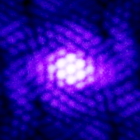 Galaxy Architect
Group: Global Moderators
 United States
United States
Messages: 2613
Status: Offline
| Hah, that's a fun question; I've asked myself a similar thing too (what happens to light that falls on a star?). But I've never actually looked into it, so I'm thankful you asked. 
From what I can tell right now, the answer is discussed in what is called The Reflection Effect", as it applies to close binary stars. I'll have to read further into it, but maybe SpaceEngineer will have more to say.
whoops, fixed link

Edited by Watsisname - Saturday, 09.03.2013, 11:43 |
| |
| |
| SpaceEngineer | Date: Saturday, 09.03.2013, 21:56 | Message # 107 |
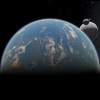 Author of Space Engine
Group: Administrators
 Russian Federation
Russian Federation
Messages: 4800
Status: Offline
| Quote (HarbingerDawn) What is the albedo of the Sun?
Nearly zero in wide range of wavelengths. As you know, stars often compared with absolutely black body. Photosphere of the Sun is almost opaque on a dephs of several hundreds kilometers, and formed visible "surface" of the Sun. It absorbs and re-emits all light fallen on it. More precise theory of stellar photosphere called "gray photosphere theory" taked into account non-equilibrity and various other effects. But "albedo" of the stellar photosphere for red and yellow dwarves is nearly zero. Hot stars have non-blackbody spectrum due to great or full ionization of hydrogen. "The reflection effect" in the binary systems is not a simple reflection of companion's light, but heating up the photosphere by it.

|
| |
| |
| neutronium76 | Date: Monday, 25.03.2013, 01:16 | Message # 108 |
 World Builder
Group: Users
 Greece
Greece
Messages: 718
Status: Offline
| What is the gravity at the centre of a spherical body?
e.g. on the surface of the earth it is 1g but in the centre it should be approx. zero.
So at the centre of a black hole it should be also zero. But this doesn't make any sense. I mean the singularity of a black hole is at its centre right? Or is it at an imaginary surface where gravity is at its maximum i.e. infinite? If singularity is at the surface of a black hole then where is the event horizon? I am confused  .... ....
PC1:Core i7 970@3.34GHz, 6 cores/12 threads, 12GB DDR3 RAM@1.34GHz, 2x(SLI) GTX-580 GPUs 3GB VRAM(GDDR5)@1GHz, OS:Win7x64SP1
PC2:Core2Quad X9770@3.2GHz, 2 cores/4 threads 4GB DDR2 RAM@1GHz, GTX-285 GPU 1GB VRAM(DDR3)@1.24GHz, OS:WinVistax64SP2
|
| |
| |
| HarbingerDawn | Date: Monday, 25.03.2013, 01:45 | Message # 109 |
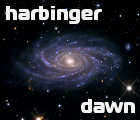 Cosmic Curator
Group: Administrators
 United States
United States
Messages: 8717
Status: Offline
| Quote (neutronium76) What is the gravity at the centre of a spherical body?
At the exact center of a perfect sphere it is zero.
A singularity is a point mass. So it has no volume and no center. So at the exact center of a black hole there would be infinite gravity, at least as far as we can calculate with our current models and theories, because that is the location of the singularity. Probably we will discover in the future more information and better theories which might tell us that there really is no singularity, but just a very compact mass supported by forces or arrangements of matter we don't know about yet. If that is the case, then the gravity at the exact center of a black hole would zero. Move even a nanometer away from the center though and the gravity would be extreme.
All forum users, please read this!
My SE mods and addons
Phenom II X6 1090T 3.2 GHz, 16 GB DDR3 RAM, GTX 970 3584 MB VRAM
|
| |
| |
| Watsisname | Date: Monday, 25.03.2013, 03:12 | Message # 110 |
 Galaxy Architect
Group: Global Moderators
 United States
United States
Messages: 2613
Status: Offline
| Basically what Harbinger said.  For a spherically-symmetric mass distribution; the net gravitational field at the center is indeed zero. For a spherically-symmetric mass distribution; the net gravitational field at the center is indeed zero.
For a black hole this gets complicated, because you've got a huge amount of mass in a very small region of space. Because the gravity is so intense you need to use General Relativity to describe it, which results in the prediction of a gravitational singularity (point mass with infinite density). However at these scales Quantum Mechanical effects cannot be ignored, so we need to use both theories. GR and QM work superbly on their own terms (they're probably the two most successful theories in all of physics), but we have not yet figured out how to use them together to describe things like this -- the centers of black holes, the first instant of the Big Bang, etc.
Presumably some future theory of quantum gravitation will solve this, but for now we throw our hands in the air and say "we don't know what happens under these conditions." 
edit: Sorry, I worded that horribly the first time.

Edited by Watsisname - Monday, 25.03.2013, 03:41 |
| |
| |
| SpaceEngineer | Date: Monday, 25.03.2013, 13:23 | Message # 111 |
 Author of Space Engine
Group: Administrators
 Russian Federation
Russian Federation
Messages: 4800
Status: Offline
| Black hole is not a spherical distribution of mass, but a point. It have no surface, but event horizon, which is a mathematical surface where escape velosity is equivally to the speed of light. "Gravity" of the event horizon, i.e. acceleration of a free fall, depends on a mass of the black hole (because radius of the event horizon depends on it). Very huge supermassive black holes in the center of galaxy may have so low "surface gravity" and tidal forces on the "surface", what space ship can pass the event horizon and being not destructed. But the gravity at "center" of the black hole, where all its mass is concentrated, is infinite in terms of General Relativity, or some-unknown-finite-number in terms of Quantum Gravity, the theory that is not builded yet.
PS: singularity of a rotating (Kerr's) black holes have a shape of a ring. Very fast rotating black holes even have no event horizon, but only "naked singularity", with metrics reminded a portal to another universe (not a 3D wormhole, but a flat 2D round with a ring singulariy around it).

|
| |
| |
| smjjames | Date: Friday, 03.05.2013, 15:24 | Message # 112 |
|
World Builder
Group: Users
 United States
United States
Messages: 913
Status: Offline
| Quote (HarbingerDawn)
Quote (lopiko)
How do you changed color of comet tail?
All procedural comet tails have a 5% chance of being green.
^This got me to wondering out of curiosity, can real life comets be in different colors? I know the color of the host star would have some affect, as would atmospheres that you are looking through, and sometimes pictures have the gas part of the tail look bluish, so, can they be colors like brown and green?

|
| |
| |
| HarbingerDawn | Date: Friday, 03.05.2013, 15:38 | Message # 113 |
 Cosmic Curator
Group: Administrators
 United States
United States
Messages: 8717
Status: Offline
| Quote (smjjames) can real life comets be in different colors?

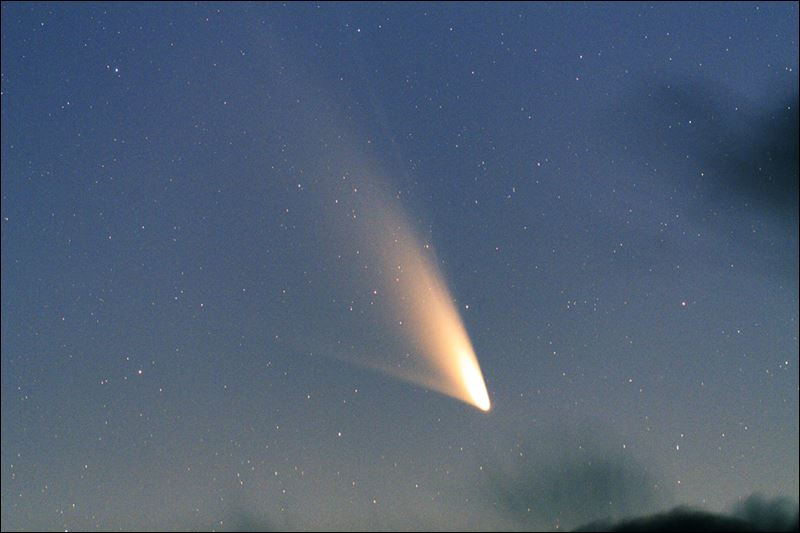
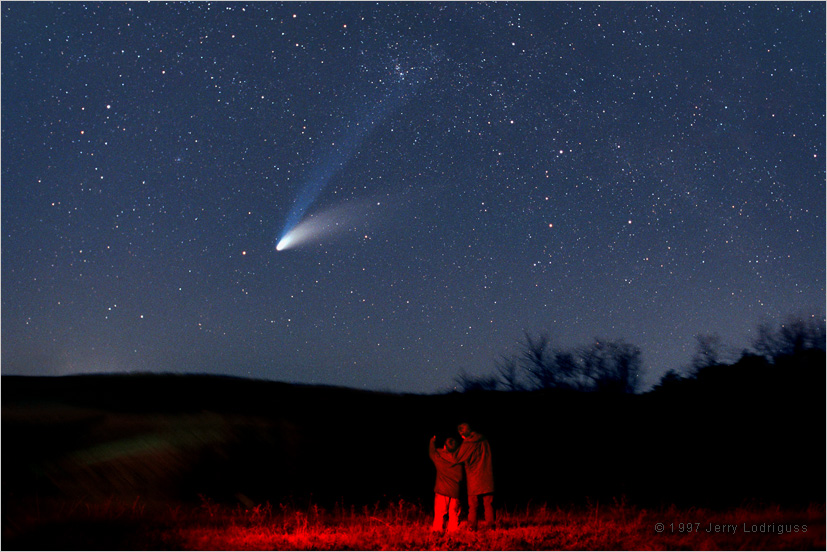
I'll let you be the judge.
All forum users, please read this!
My SE mods and addons
Phenom II X6 1090T 3.2 GHz, 16 GB DDR3 RAM, GTX 970 3584 MB VRAM
|
| |
| |
| smjjames | Date: Friday, 03.05.2013, 15:48 | Message # 114 |
|
World Builder
Group: Users
 United States
United States
Messages: 913
Status: Offline
| Oh yeah, I remember now that thing about the green comet (the real one), it was an odd thing.
The third one is what I was mentioning about the gas tail being bluish.

|
| |
| |
| HarbingerDawn | Date: Friday, 03.05.2013, 16:12 | Message # 115 |
 Cosmic Curator
Group: Administrators
 United States
United States
Messages: 8717
Status: Offline
| Quote (smjjames) I remember now that thing about the green comet (the real one), it was an odd thing.
There is no "the" green comet, there have been several comets which were green in color, they're not the most common things, but they're not extremely rare either.
All forum users, please read this!
My SE mods and addons
Phenom II X6 1090T 3.2 GHz, 16 GB DDR3 RAM, GTX 970 3584 MB VRAM
|
| |
| |
| smjjames | Date: Friday, 03.05.2013, 16:17 | Message # 116 |
|
World Builder
Group: Users
 United States
United States
Messages: 913
Status: Offline
| Might have been better to say 'that' green comet since I read an article or something on it (same image you used I think) and I only know of one green comet.
Well, 'knew' since you said that there are more than one.

Edited by smjjames - Friday, 03.05.2013, 16:18 |
| |
| |
| midtskogen | Date: Friday, 03.05.2013, 17:10 | Message # 117 |
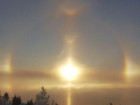 Star Engineer
Group: Users
 Norway
Norway
Messages: 1674
Status: Offline
| One thing to remember is that comets are often photographed near the sun and therefore low above the horizon, which might colour it more yellow/orange/red than it really is. But, yes, while comets appear white to the naked eye, photographs will often show colours.
NIL DIFFICILE VOLENTI

|
| |
| |
| Watsisname | Date: Friday, 03.05.2013, 22:03 | Message # 118 |
 Galaxy Architect
Group: Global Moderators
 United States
United States
Messages: 2613
Status: Offline
| Green comets are caused by certain gases (e.g. diatomic carbon and cyanogen), which have strong emission lines in the green part of the spectrum. More common "ion" tails are blue due to ionized carbon monoxide which, like air molecules in our atmosphere, preferentially scatters blue light. Dust tails shine white due to reflected sunlight.
And yeah, from here on Earth they can also appear reddened just by the effects of our own atmosphere.
edit: Oops, I was wrong about Cyanogen. Comets do have that gas, but it doesn't glow green (it's actually ultraviolet). Chalk that one up to bad reporting from various astronomy websites! 

Edited by Watsisname - Friday, 03.05.2013, 22:30 |
| |
| |
| smjjames | Date: Sunday, 05.05.2013, 15:50 | Message # 119 |
|
World Builder
Group: Users
 United States
United States
Messages: 913
Status: Offline
| I've got an astrophysics question that is related to what I think might be a bug in SE.
Would it be possible for moons to still orbit around a planet that is tidally locked to it's star? Because I've seen a few of those planets in 0.97.
Logic would say probably not due to the way tidal mechanics work, although it might be possible for a moon to even prevent a planet from becoming tidally locked. However, I don't know what the real answer would be for sure.

Edited by smjjames - Sunday, 05.05.2013, 15:52 |
| |
| |
| apenpaap | Date: Sunday, 05.05.2013, 15:56 | Message # 120 |
 World Builder
Group: Users
 Antarctica
Antarctica
Messages: 1063
Status: Offline
| Well, eventually it would crash into the planet. But this would still take a long time, so it's quite possible to find them. And a moon could indeed prevent tidal locking to the sun by instead tidally locking the planet to itself, but it would have to be a pretty heavy moon orbiting close to its planet to beat the sun's tidal effects on planets close to their sun. The strength of tidal effects is proportional to the square of the distance, so the distance to sun and moon are both very important in determining who will win.
I occasionally stream at http://www.twitch.tv/magistermystax. Sometimes SE, sometimes other games.
|
| |
| |